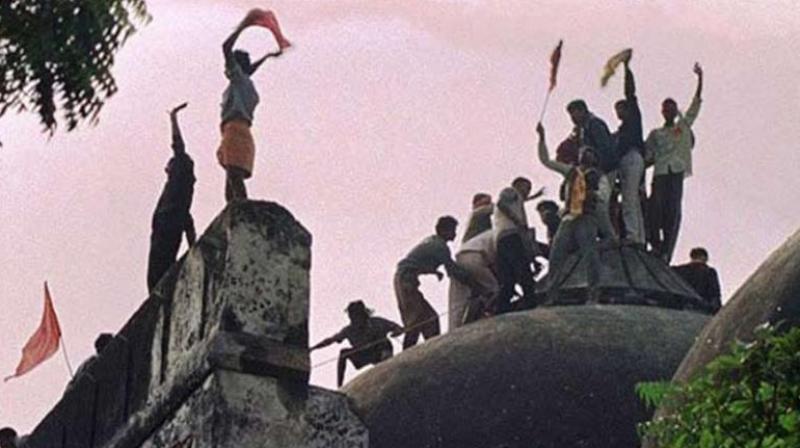A day when UP cop joined kar sevaks to shout Jai Shri Ram
One person who was staying with me in the tent told me that all the arrangements had been made by the RSS.

Among the hundreds and thousands of kar sevaks armed with hammers and shovels, I wormed my way as an undercover for the Statesman newspaper to the Ram Janambhoomi-Babri Masjid site in Ayodhya way back in December 1992. Before going to the holy town, I was told that all kar sevaks were being issued parichay patras (letters of identification/introduction). To obtain this, I visited the BJP unit in south Delhi’s Ambedkar Nagar. I convinced the party office-bearer there that I was a Kashmiri Pandit who had to abandon his studies because of militancy in the Valley. He gave me the letter on hearing my story.
For this subterfuge, I took on the name of Sanjay Kaul. In Ayodhya, I was put through intense grilling to establish my credentials as a kar sevak. Several times I had to recite an apocryphal tale of being a Kashmiri migrant who had abandoned his studies because of militant activity. It was terrifying to see the extent to which the Rashtriya Swayamsevak Sangh (RSS), BJP, Vishwa Hindu Parishad (VHP) and the Bajrang Dal combine had gone to ensure there was no infiltration. All through my stay in Ayodhya, the BJP’s letter proved to be my sole protection. After I was accepted as “genuine”, I saw first hand the face of religious zealotry that had remained veiled by political hoopla.
I managed to stay with the kar sevaks from Delhi and Haryana in a tent at Guru Gobind Singh camp near the disputed site. I was briefed by pracharaks of the RSS and “indoctrinated” by the Bajrang Dal.
One early morning (a few days before the December 6 demolition), hundreds of people gathered near my tent. They were carrying boulders and shovels and shouting “Jai Shri Ram”. Out of fear, I too joined the mob, which was led by then BJP MP B.L. Sharma ‘Prem’. Soon, the mob started breaking down three gravestones. I also carried the debris to a nearby pond, along with other kar sevaks. Within no time some makeshift shops were set up at the site to sell tea. All this happened in the presence of the saffron party leader. People called it “chhoti (small) kar seva”. Some Bajrang Dal activists even wanted to build a small temple there, but they were prevented by others because, they said, it would hamper the work of Ram temple.
One person who was staying with me in the tent told me that all the arrangements had been made by the RSS. “We have planned the rann neeti (war strategy). And the UP police is supporting us. We are sure of our victory,” he said and even took me to a huge bhojanalaya for food. The person, serving us food, said about one lakh people had already reached “the site” and that some more kitchens had been opened and godowns had been packed with food.
At the site of the then disputed temple, the Uttar Pradesh police and the Provincial Armed Constabulary were placed outside the structure, while the Central Reserve Police Force was inside. On the very first evening, I spotted a PAC constable shouting “Jai Shri Ram” slogans along with kar sevaks barely a few metres away from the disputed structure.
As I moved through the holy town wearing a two-day stubble and soiled clothes, I interacted with many PAC men. Always, I was treated with respect, even deference. One night some kar sevaks and I spent hours chatting with a group of PAC personnel. “We are solidly behind you. Don’t worry,” said a policeman. “If we are ordered on December 6 to attack you, we will lay down our arms and join you,” reassured another. “Come what may, we will force the paramilitary to surrender,” said a third.
Some days ago a constable of the PAC had been suspended for removing bricks from the disputed structure, i.e. the Babri Masjid.

